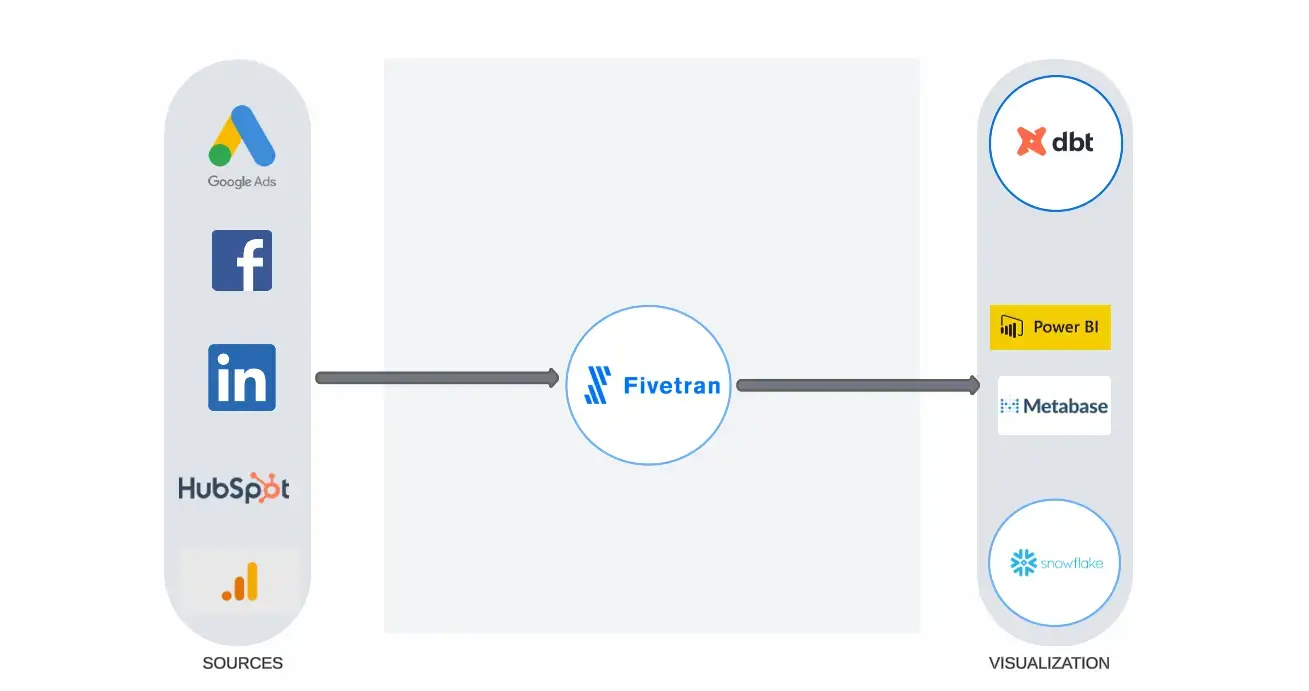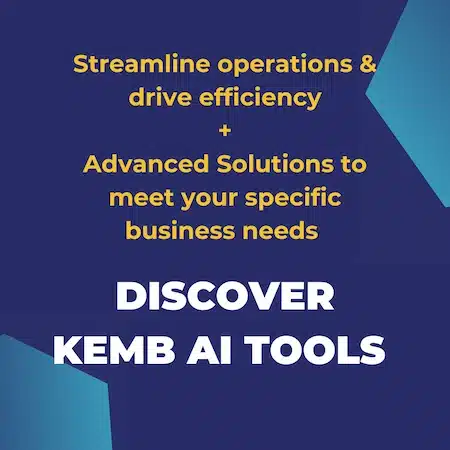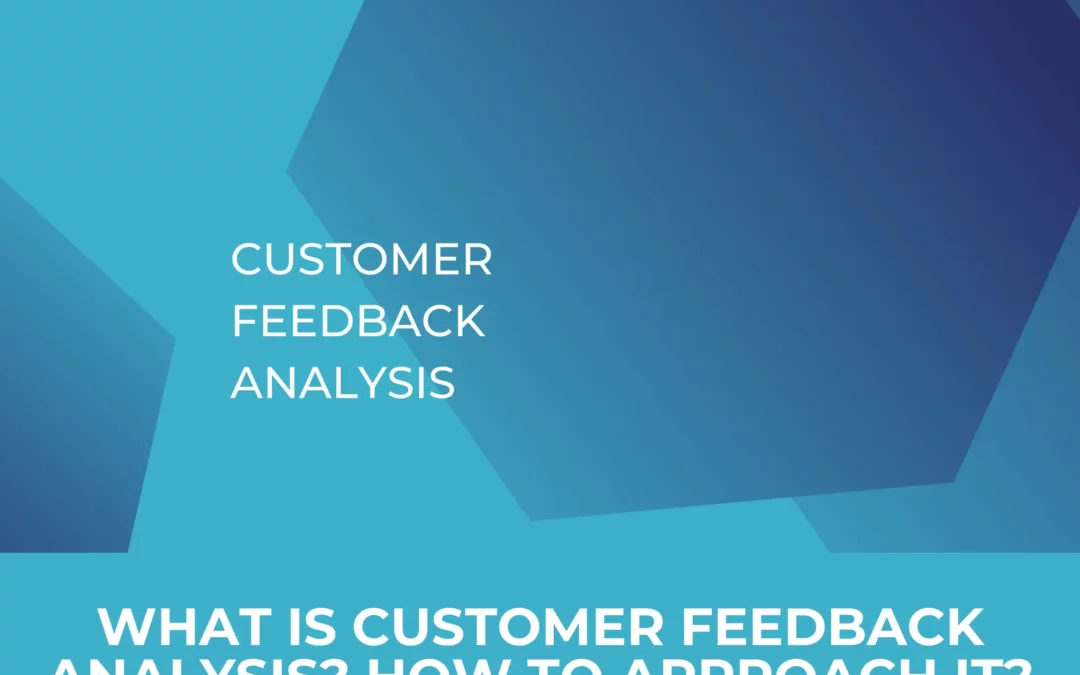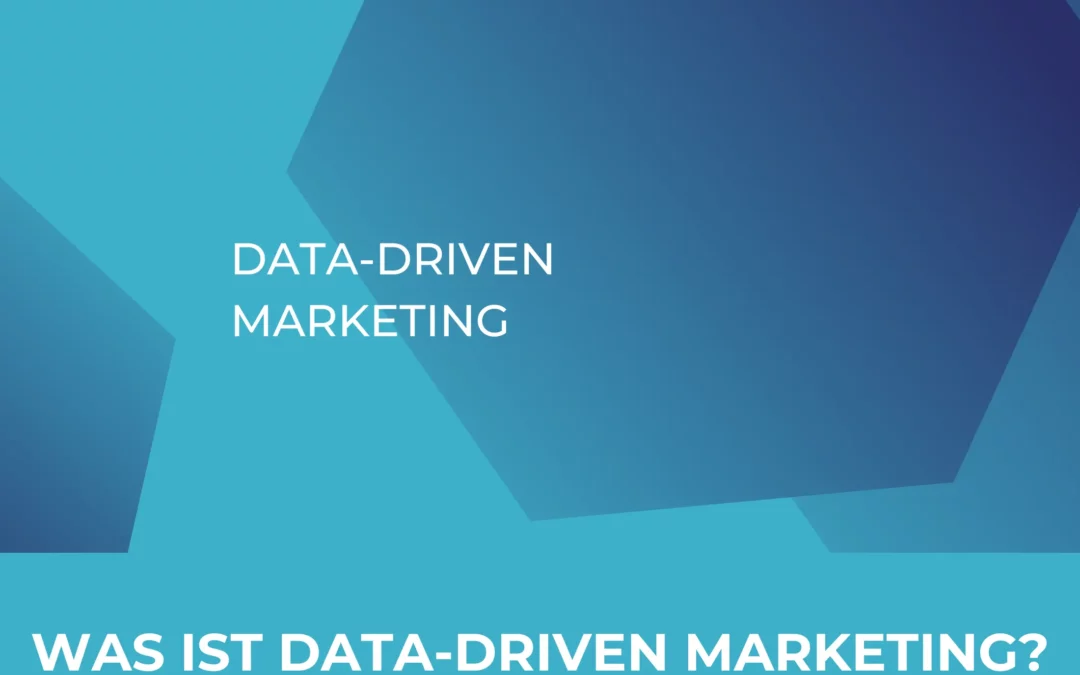Businesses in the data-driven world face the challenge of managing vast amounts of information from multiple sources. Efficient data management has become a key driver of business success, helping organizations streamline operations, make informed decisions, and boost overall productivity. But with data scattered across various systems, integrating it into a unified, actionable format can be daunting. This is where data integration comes into play. In this article, we will explore the key components, benefits of data integration, the common challenges it addresses, and why KEMB’s approach using tools like Fivetran, AWS Lambda, S3, and custom API programming can provide robust solutions tailored to your business needs.
Table of Contents
What is Data Integration?
Data integration is the process of consolidating data from various sources into a unified, comprehensive view. It involves gathering information from both internal and external systems such as customer relationship management (CRM) systems, sales databases, marketing tools, and inventory management systems. Each of these systems often stores data in different formats and structures, making it difficult to achieve a clear, cohesive view. Data integration solves this by merging disparate data sources into a single, consistent dataset, enabling businesses to operate more efficiently and make data-driven decisions.
Key Components of Data Integration:
1. Data Collection
Gathering data from various sources, such as databases, cloud services, and external applications.
2. Data Transformation
Converting data into a common format and structure that can be easily analyzed and used.
3. Data Loading
Storing the transformed data into a central repository, such as a data warehouse or data lake.

The Benefits of Data Integration
Data integration offers numerous benefits that can transform the way organizations handle and utilize information. By consolidating data from various sources, it enhances data quality and accuracy, fosters collaboration across teams, and ultimately empowers more informed decision-making. These advantages make data integration a crucial component of any modern business strategy.
1. Enhanced Data Quality
Think of data integration as a way to ensure all your information is accurate and consistent. It’s like cleaning up a messy room; once everything is in order, it’s much easier to find what you need.
-
Consistent Data: Integration helps identify and fix inconsistencies, ensuring that data from different sources matches up correctly.
-
Accurate Data: By validating and cleaning the data, integration makes sure the information you rely on is correct and trustworthy.
Use Case: The finance department pulls data from accounting systems and BI tools. Integrated data ensures accurate financial reporting by automatically resolving discrepancies, enabling more reliable business insights and decision-making.
2. Improved Collaboration
When everyone in your company is looking at the same data, it’s easier to work together. Imagine a sports team where every player has the same game plan.
-
Unified Data Access: Teams can access the same information, reducing misunderstandings and improving teamwork.
-
Shared Insights: With integrated data, different departments can share insights and align their strategies more effectively.
Use Case: Marketing and sales teams align on data-driven strategies through integrated BI dashboards. This leads to coordinated campaigns and optimized sales pitches, driving better conversion rates and shared success.
3. Quick Access to Data
Data integration provides real-time access to information, much like having a library where all the books are perfectly organized and easily accessible.
-
Real-Time Data Availability: Automated data pipelines ensure that data is updated in real time, so you always have the latest information.
-
Centralized Data: With all your data in one place, you save time by not having to search through multiple systems.
Use Case: Operations teams can monitor inventory levels in real-time via integrated BI tools. This quick access to accurate data enables them to avoid stock shortages and make timely, data-informed decisions.
4. Higher ROI
Efficient data management reduces manual work, saving time and money. Think of it as automating a factory line, which increases productivity and reduces costs.
-
Reduced Operational Costs: Automation cuts down on manual data handling, lowering expenses.
-
Optimized Resources: Teams can focus on more strategic tasks, using their time and skills more effectively.
Use Case: HR teams utilize integrated BI systems to automate data management, allowing them to focus on strategic initiatives like employee retention and performance analytics, resulting in greater resource optimization.
5. Customer Satisfaction
Integrated data helps you understand your customers better, allowing you to offer more personalized and effective services, much like a tailor who knows their client’s exact measurements.
-
Personalized Experiences: With a complete view of customer data, you can tailor your services to meet their needs more precisely.
-
Better Service Delivery: Quick access to customer information enables you to respond more effectively to their inquiries and needs.
Use Case: Customer service leverages BI tools with integrated data for a 360° customer view, allowing agents to provide faster, personalized support, which increases customer loyalty and satisfaction.
Challenges Addressed by Data Integration
Data integration tackles common challenges like handling disparate systems, ensuring data quality, and managing scalability. It brings together data from various sources, cleans and standardizes it, and ensures systems are compatible, helping organizations scale efficiently while maintaining data integrity.
1. Disparate Systems
Combining data from different systems can be challenging, like translating multiple languages into one. Our tools ensure all data speaks the same language, making it easier to understand and use.
-
Unified Data Formats: Different formats are standardized, making integration smooth and analysis straightforward.
-
System Compatibility: Tools and APIs ensure different systems work together seamlessly.
2. Data Quality Issues
Poor data quality can be a significant problem. Imagine trying to cook with spoiled ingredients. Data integration ensures your data is fresh and reliable.
-
Data Cleaning: Automated processes remove duplicates and errors, ensuring high-quality data.
-
Validation Rules: Applying rules during integration guarantees only accurate and relevant data is used.
3. Scalability
As your business grows, so does your data. Think of data integration as a warehouse that can expand as needed, ensuring you can store and manage more information without issues.
-
Scalable Solutions: Cloud-based tools like AWS Lambda and S3 offer scalable storage and processing.
-
Flexible Integration: Custom API solutions can grow with your business needs.
4. Security and Compliance
Keeping data secure and compliant is crucial, like having a strong lock on a safe. Data integration includes robust security measures to protect sensitive information and ensure compliance with regulations.
-
Secure Data Handling: Integration processes incorporate security protocols to protect data.
-
Compliance: Adherence to regulations ensures your data management practices are up to industry standards.
Common Data Integration Problems
Data integration problems often arise from issues like inconsistent data formats and data silos, which can hinder effective use of information. Problems differ from challenges in that problems are specific obstacles encountered during the integration process, such as incompatible formats or isolated data, whereas challenges are broader, ongoing concerns like system compatibility or ensuring data quality. Solving these problems often requires specific tools and methods, such as data transformation and silo-breaking techniques, to ensure smooth integration.
1. Inconsistent Data Formats
Different formats can be a hurdle, like trying to fit mismatched puzzle pieces together. Integration tools standardize these formats, making data easier to work with.
-
Standardization: Tools like Fivetran and DBT can help convert various formats into a unified structure.
-
Transformation: Data is transformed to match the required format, ensuring compatibility.
2. Data Silos
Isolated data can prevent a complete view, like having pieces of a puzzle but not the whole picture. Integration breaks down these silos, creating a comprehensive view of your data.
-
Centralized Data Warehouse: A central repository for all data allows for comprehensive analysis.
-
Data Lakes: Storing raw data in a data lake makes it easier to access and integrate.
3. Latency Issues
Real-time data is crucial for timely decisions. It’s like having fresh ingredients delivered just in time for cooking. Our timely and incremental refreshes make sure your data is always up-to-date.
-
Real-Time Integration: Ensures data is available when needed, reducing delays.
-
Efficient Pipelines: Streamlined data flow keeps information current and accessible.
4. Integration Costs
High costs can be a barrier, but we provide cost-effective solutions, like finding the best deals without compromising quality.
-
Cost-Effective Tools: We use tools that deliver high-quality integration at competitive prices.
-
Automated Processes: Automation reduces manual intervention, lowering costs.
5. Lack of Connectivity
Not all systems are designed to connect easily. Custom API solutions ensure seamless integration, like building a bridge between two islands.
-
API Development: Custom APIs enable connections between systems lacking native integration capabilities.
-
Third-Party Connectors: Using connectors expands integration possibilities, linking various systems.
Popular Data Integration Tools
Data integration tools are vital for bringing together data from disparate sources, ensuring it is accessible and usable for analysis and decision-making. These tools come in various forms, including ETLand ELT platforms, data replication software, and cloud-based solutions. They automate complex data tasks, streamline workflows, and ensure data quality and consistency across systems. Popular examples of such tools include Fivetran, Informatica, Talend, and Microsoft’s Azure Data Factory. Each of these solutions provides unique features for handling large volumes of data, improving business intelligence capabilities, and scaling with an organization’s growth.
Here are a few examples of popular data integration tools with brief descriptions:
Fivetran
Fivetran automates the extraction and loading of data from various sources into a central repository like a data warehouse. It simplifies data integration by offering pre-built connectors for numerous applications, allowing businesses to integrate data with minimal engineering effort.
Informatica
Informatica provides a comprehensive suite of data integration tools designed for large-scale enterprises. It offers capabilities like ETL, data quality, and data governance, making it ideal for complex, high-volume environments that require strict compliance and security.
Talend
Talend is an open-source data integration platform that supports both cloud and on-premise environments. It offers ETL, data quality, and real-time data integration, making it a flexible option for businesses looking for cost-effective solutions with extensive customization.
Azure Data Factory
Microsoft’s Azure Data Factory is a cloud-based ETL service that integrates data from various sources for analysis and processing in the cloud. It is highly scalable and integrates well with other Azure services, making it suitable for organizations using Microsoft’s ecosystem.
Stitch
Stitch is a lightweight ETL tool designed for fast and simple data integration. It focuses on ease of use, offering straightforward configurations for businesses looking to replicate data across systems without needing extensive technical expertise.
Embracing ELT for Superior Data Integration
At KEMB, we prefer using ELT (Extract, Load, Transform) over the traditional ETL (Extract, Transform, Load) approach due to its significant advantages in efficiency, flexibility, and scalability. Here’s why ELT is our approach of choice:
1. Efficiency and Speed
ELT involves loading raw data into a data warehouse before transforming it. This approach reduces the time needed to get data into your system, enabling faster access to information and quicker insights.
Flexibility
By transforming data after it has been loaded, ELT allows for on-demand processing. This means that transformations can be adjusted or applied as needed without reloading the data, making the system more adaptable to changing requirements and queries.
Scalability
Modern data warehouses are designed to handle large volumes of data efficiently. ELT leverages this capability, allowing us to manage and process extensive datasets more effectively than traditional ETL processes, which often require more complex and resource-intensive operations.
While we advocate for ELT due to these benefits, we understand that some users may have existing ETL processes or requirements. If your current setup is ETL-based, we can certainly adapt our approach to accommodate this.
However, we generally recommend ELT for its streamlined processing, scalability, and flexibility, which align better with modern data practices and cloud-based infrastructures.
With ELT, we ensure that your data integration is not only faster and more efficient but also scalable and adaptable to meet your evolving business needs. Should your situation require an ETL approach, we are equipped to integrate and optimize your existing processes to fit seamlessly with our overall data strategy.
Flexibility + Reliability: Our Data Integration Approach at KEMB
At KEMB, we employ industry-leading tools and technologies to deliver efficient, scalable, and tailored data integration solutions that meet your unique business needs. Our approach emphasizes automation, flexibility, and reliability to ensure your data integration processes are seamless.
Fivetran
Fivetran automates the extraction and loading of data from various sources, allowing for near real-time synchronization across systems. By eliminating the need for manual intervention, it reduces the likelihood of errors and frees up resources, enabling your team to focus on strategic data analysis rather than managing data pipelines. This automation is ideal for businesses looking to integrate a diverse range of applications with minimal development effort.
AWS Lambda & S3
We leverage AWS Lambda and S3 for scalable and secure cloud storage and processing. AWS Lambda enables serverless data transformations, meaning that your data can be processed on-demand without the need for dedicated infrastructure. S3 offers secure, cost-effective data storage that scales with your business, making it perfect for handling large volumes of data efficiently. Together, these tools ensure your integration is flexible, secure, and future-proof as your data needs evolve.
API Programming
For businesses with specific requirements that cannot be met by standard integrations, we offer custom API programming. Our custom solutions ensure that even the most unique systems and applications can be seamlessly integrated into your data environment. This flexibility allows us to address niche challenges and provide a fully cohesive data ecosystem tailored to your business operations.
Although these tools are central to KEMB’s approach, we remain adaptable and can tailor our solutions based on each client’s specific requirements, ensuring the integration process aligns perfectly with their operational needs.
Data Integration Strategy
A successful data integration strategy ensures that data flows seamlessly between systems while maintaining quality, consistency, and security. At KEMB, we take a structured approach to data integration that aligns with your business goals and sets the foundation for enhanced analytics, automation, and decision-making. Here’s how we build a robust strategy for our clients:
1. Assessing Business Needs and Data Landscape
Before we begin any integration work, we start by thoroughly understanding your business’s needs and current data environment. This involves:
Identifying Key Objectives
We work closely with stakeholders to understand the specific goals of the data integration initiative. Whether it’s improving data visibility for analytics, streamlining operations, or ensuring compliance, the strategy is designed around these objectives.
Evaluating Existing Data Sources
We conduct an audit of all data sources and systems, such as CRM platforms, financial systems, cloud applications, and legacy databases. This allows us to determine how data is currently managed and stored and identify any gaps or inconsistencies that need to be addressed.
2. Choosing the Right Tools
Selecting the right data integration tools is critical for executing the strategy. Our choices are based on scalability, ease of use, and compatibility with your existing infrastructure. Here’s how we incorporate our preferred tools:
Fivetran for Automation
Fivetran is integrated early in the process to automate the extraction and loading of data from various sources. Its pre-built connectors allow us to quickly integrate a wide range of applications, reducing manual effort and ensuring that data is consistently available for analysis.
AWS Lambda & S3 for Scalability and Security
As we design the architecture, AWS Lambda handles serverless data transformations, enabling real-time processing without dedicated infrastructure. S3 offers secure, scalable storage for both raw and processed data, ensuring the solution can grow with your business needs.
Custom API Programming for Flexibility
When pre-built connectors aren’t sufficient, we develop custom APIs to connect unique systems and ensure that all relevant data flows smoothly into your central repository. This custom work allows us to meet specific business requirements while maintaining system performance.
3. Defining Data Governance and Quality Protocols
Once the data integration tools are in place, we set up data governance frameworks to ensure data quality, security, and compliance. This step is crucial for maintaining the integrity of your data:
Data Validation and Cleansing
We establish automated processes to clean and validate data during integration. This includes removing duplicates, correcting errors, and standardizing formats to ensure consistency across all sources.
4. Building the Data Pipeline
With the tools and protocols in place, we move on to building the data pipeline that ensures data is continuously and efficiently moved between systems. This involves:
Real-Time Data Flow
Using Fivetran, AWS Lambda, and other automation tools, we set up pipelines that ensure real-time data synchronization between your systems. This ensures that decision-makers have access to up-to-date information at all times.
Data Transformation
Data is transformed into a unified format that can be used for reporting, analytics, and other business processes. We leverage AWS Lambda’s serverless architecture to perform these transformations on-demand, reducing the time needed to get data into usable forms.
5. Testing and Optimization
Before fully deploying the integration solution, we conduct rigorous testing to ensure that data flows correctly and meets quality standards:
Test Runs
We simulate real data loads to identify any bottlenecks, performance issues, or inaccuracies in the pipeline. This testing phase allows us to fine-tune the integration strategy before going live.
Optimization for Performance
Based on the results of the test runs, we optimize the data flow to ensure it performs efficiently even as data volumes grow. This includes optimizing queries, improving pipeline design, and ensuring minimal latency in data access.
Partner with KEMB
Here are five good reasons, why we believe we are the right support for your project:
1. Expertise and Experience: Our team has extensive experience in integrating complex data systems across various industries.
2. Tailored Solutions: We customize our integration solutions to meet your specific business needs.
3. Advanced Tools: We leverage the latest technologies to ensure efficient and reliable data integration.
4. Continuous Support: Our dedicated support team ensures that your data integration processes run smoothly with minimal downtime.
5. Cost-Effective: We provide high-quality integration services at competitive prices, ensuring you get the best value for your investment.
By addressing the pains and gains of data integration, we help businesses leverage the full potential of the data, driving growth and efficiency.
For more information on how our data integration solutions can benefit your business, get in touch with our experts directly or find out more about our services on wearekemb.com.We are happy to support you in your data integration strategy!





